The highlights of haikyo/urban exploration seem to vary depending on the person, meaning that for some it’s purely for the pleasure of exploration and the buildings themselves, whereas others are far more interested in the detritus and the details left behind. And for me at least, it’s definitely the latter that is key — little pieces of information that give hints about the lives of the people who once worked, or better still lived, there. Items that offer the briefest snippet of the past — a moment captured in time almost.
And yet that said, the Mt. Asama Volcano Museum is the first haikyo I’ve visited that was actually more interesting on the outside; its shape and precarious position on the side of a mountain making it a sight that is simultaneously both sad and stunning.
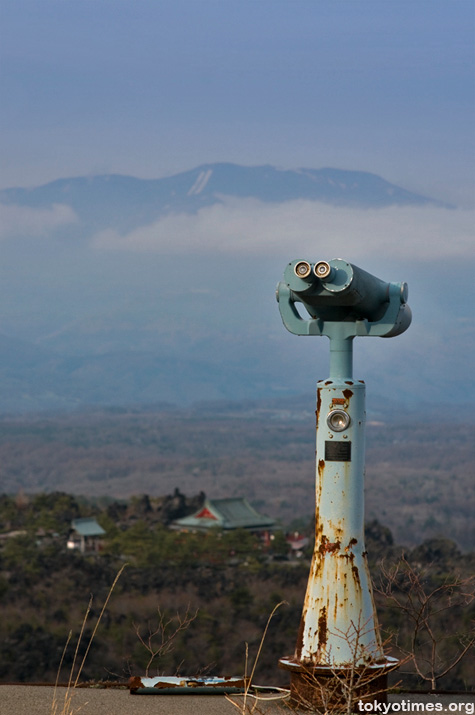
More pictures of which — in black and white — can be seen here in Part 1.
But that’s not to say there were no signs of past life in the place, it’s just that on the whole they weren’t especially personal that’s all. Except this perhaps somewhat tellingly full box of business cards — still patiently waiting for a taker since the museum closed its doors sometime in 1993.
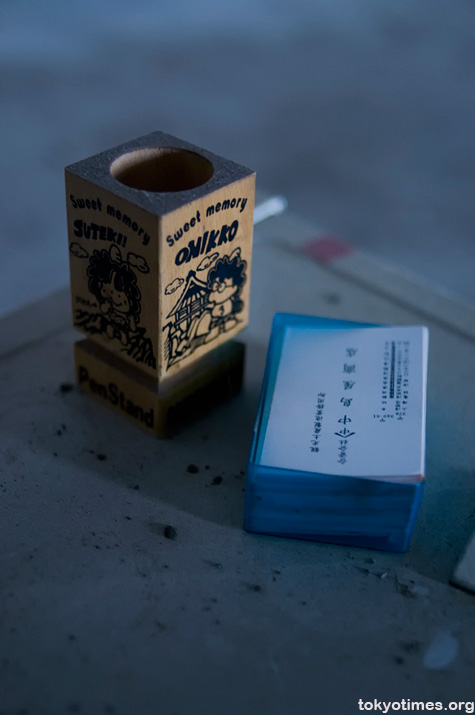
Otherwise it was mostly indicators of the work that went on there, whether it was science-based study,
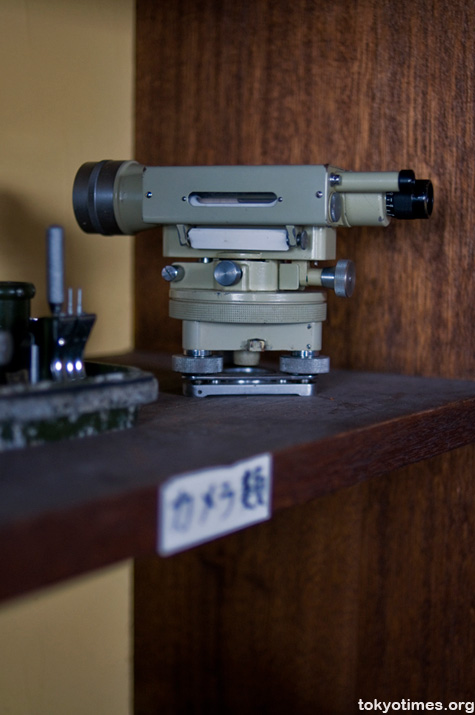
or catering to the customers culinary needs.
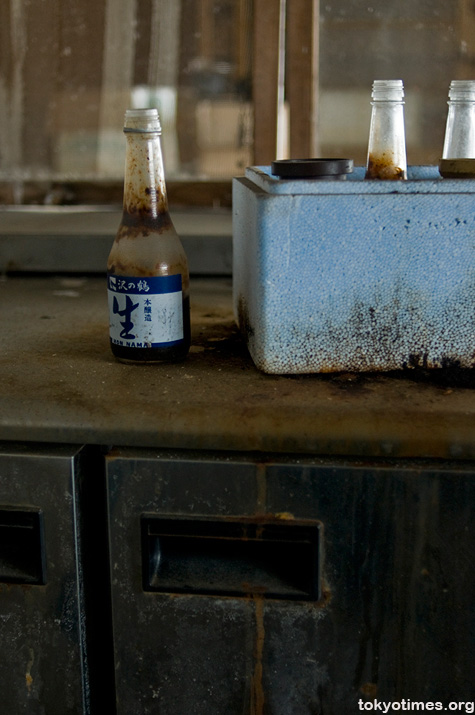
And maybe also their health, should they have been struck down with a bug.
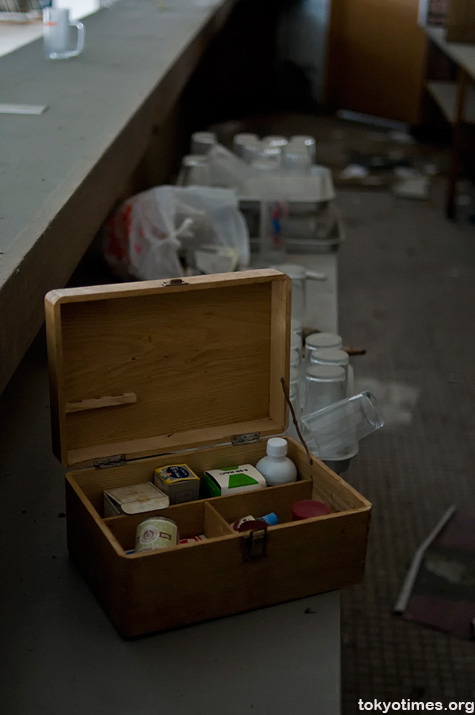
Possibly even a bird.
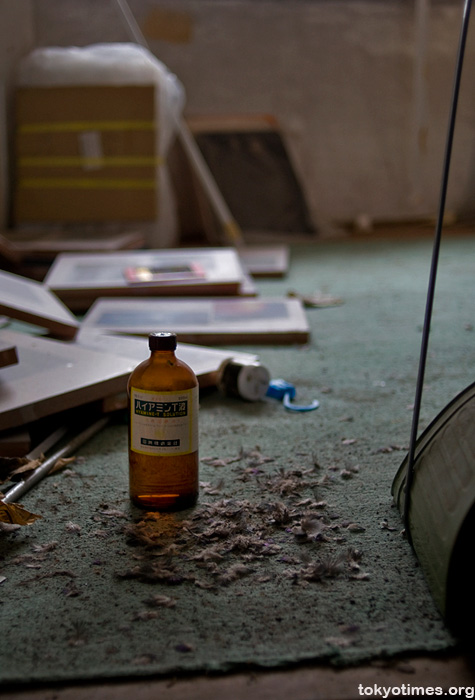
Plus, as it was open back in the day when smoking was practically a prerequisite rather than something to be merely put up with, there were signs of where some people smoked their last cigarette on the premises.
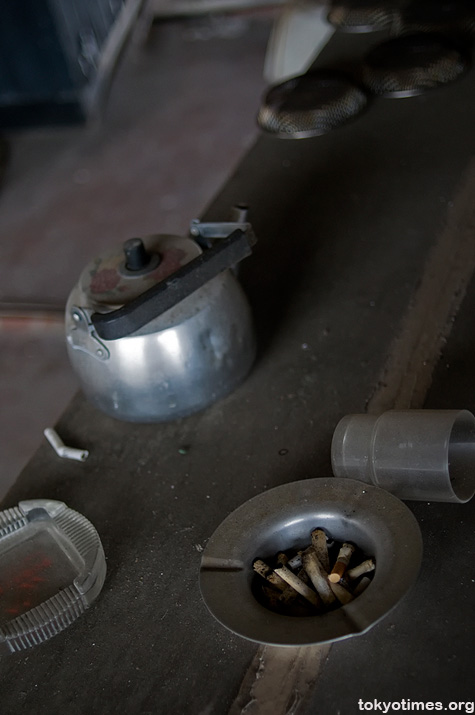
Or off the premises, in more of a nod towards the ‘manners’ that pervade today.
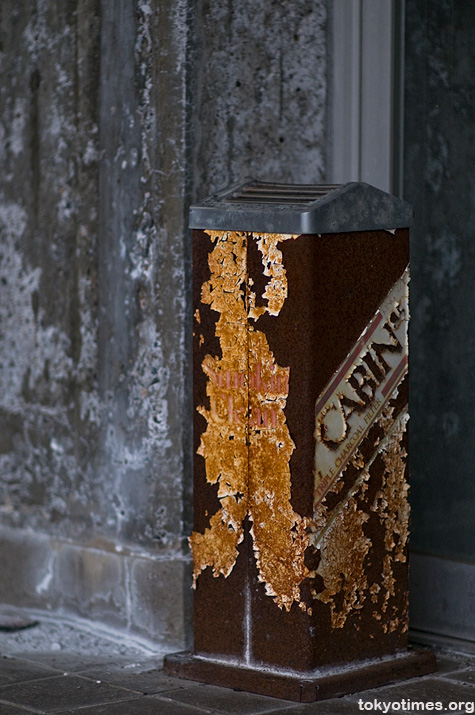
And yet just like almost all haikyo, the museum conjured up a few mysteries, this time due to its unfathomable possession of a diverse array of dead animals. Some of which were stuffed.
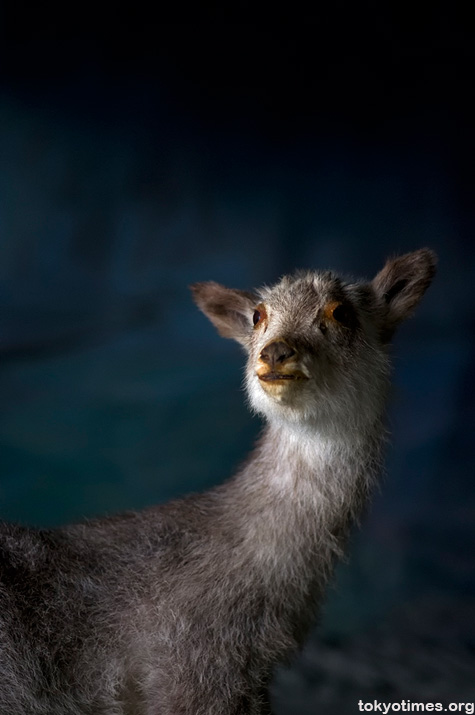
Whereas others were simply stuffed into jars.
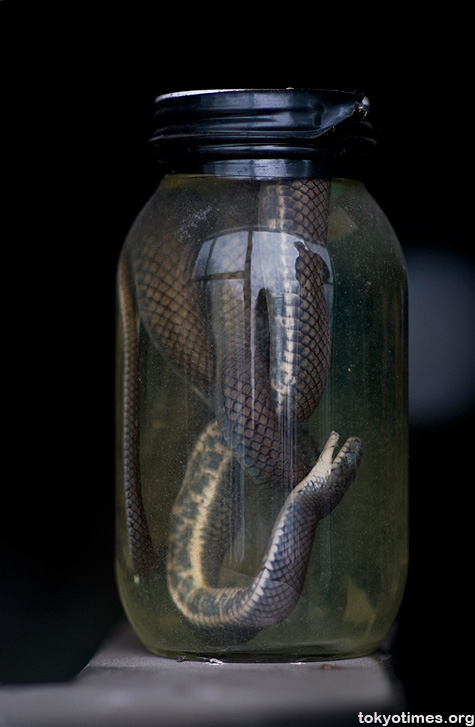
Which are now left alone with nobody to look at them.
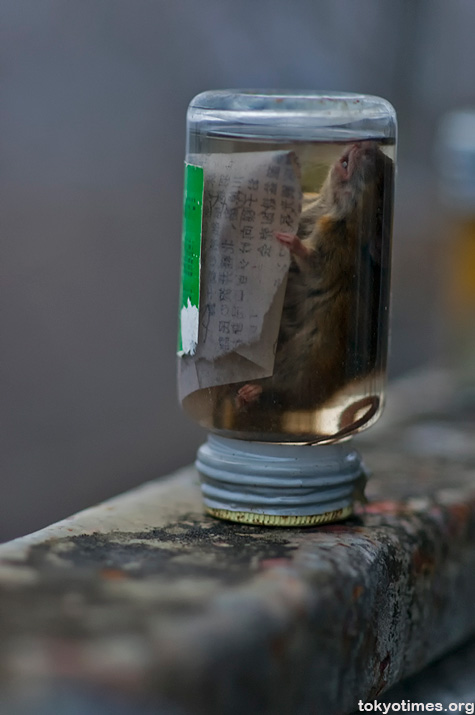
Should they have ever wanted to in the first place.
Jason Collin Photography says
I like haikyo for both the feeling of exploration and also seeing the personal lives of the people who used to be there. Things like the business cards you found, I really like that kind of stuff and it puts a name to the place, like, ah, Shota worked at this desk.
I liked looking at the bulletin board at a Russian Village haikyo that was still covered in notes. Also, at the mining town haikyo the dormitories often contained closets full of clothes and notebooks on tables. I like leafing through them all.
Also, when you photograph a single object, it allows the viewer to really see it and if it’s a personal item, then that photo really tells a story, which should be the point of all photographs. If a photo doesn’t tell a story, then it’s just a snapshot.
an englishman in osaka says
That rat in the last pic looks like he’s just read the latest economic figures in the Asahi Shimbun. Great photos.
Mike says
Nice photos Lee! I’m amazed at how clear your pictures of the snake and the rat came out! I love the small items in haikyo myself, especially things that look old or have dates on them. Its almost like being transported back in time. You can imagine the people that lived and worked there and perhaps what it must have been like. You also captured a few shots I never even saw! That rusty cigarette box and the medical kit – nice work!
thejapaneseeye says
I agree with an english man although my first thought was that it was reading the closure notice. As with the other comments here, the storytelling images are great, the “sweet memory” box and business cards are a nice combination.
What I like about looking at about all these shots is thinking how I might compose a shot differently, the only thing I might be tempted do here is use a macro to get close to the rust on that cigarrette bin or the detail on the business cards, but the more shots I see the harder is to get an orignal take!
MrSatyre says
Is there an unwritten law of haikyo regarding artifacts left lying around these places? I know that most Japanese are pretty honest, but if a place is abandoned… I guess I’m just surprised so much interesting stuff remains unclaimed by any of the folks who wander through.
Mike says
@MrSatyre Yes, the unwritten law of Haikyo is the same as hiking, diving and virtually any other activity where you interact with nature or the past: Take only pictures, leave only footprints. Same for foreigners and Japanese people alike.
MJG says
Agreed with others- the rat is a great shot, great angle that makes it seem he’s holding the paper. My shots of those vatted animals on the balcony didn’t come out nearly as well.
Lee says
Thanks a lot for the kind comments. It’s very rewarding, especially from fellow haikyoists.
I’m currently away from Tokyo at the moment, and only have iPhone access, which makes responding to multiple comments a bit tricky, but I’ll reply properly when I get back on Sunday.
S_in_shanghai says
I like the one with the namecards from an era without www’s, email adresses and mobile no’s. I have a holder with some of those from the start of my business career. Not sure if any of the phone no’s or adresses are valid today though.
I like the rust too, you got quite catchy light on that pic
/S
Gabi says
I am officially in love with haikyo…I wanna do it!!!
Dave says
This place looks amazing.
Thanks for the photos and story!
Bart says
Cool website with some great pictures.
Will be back!